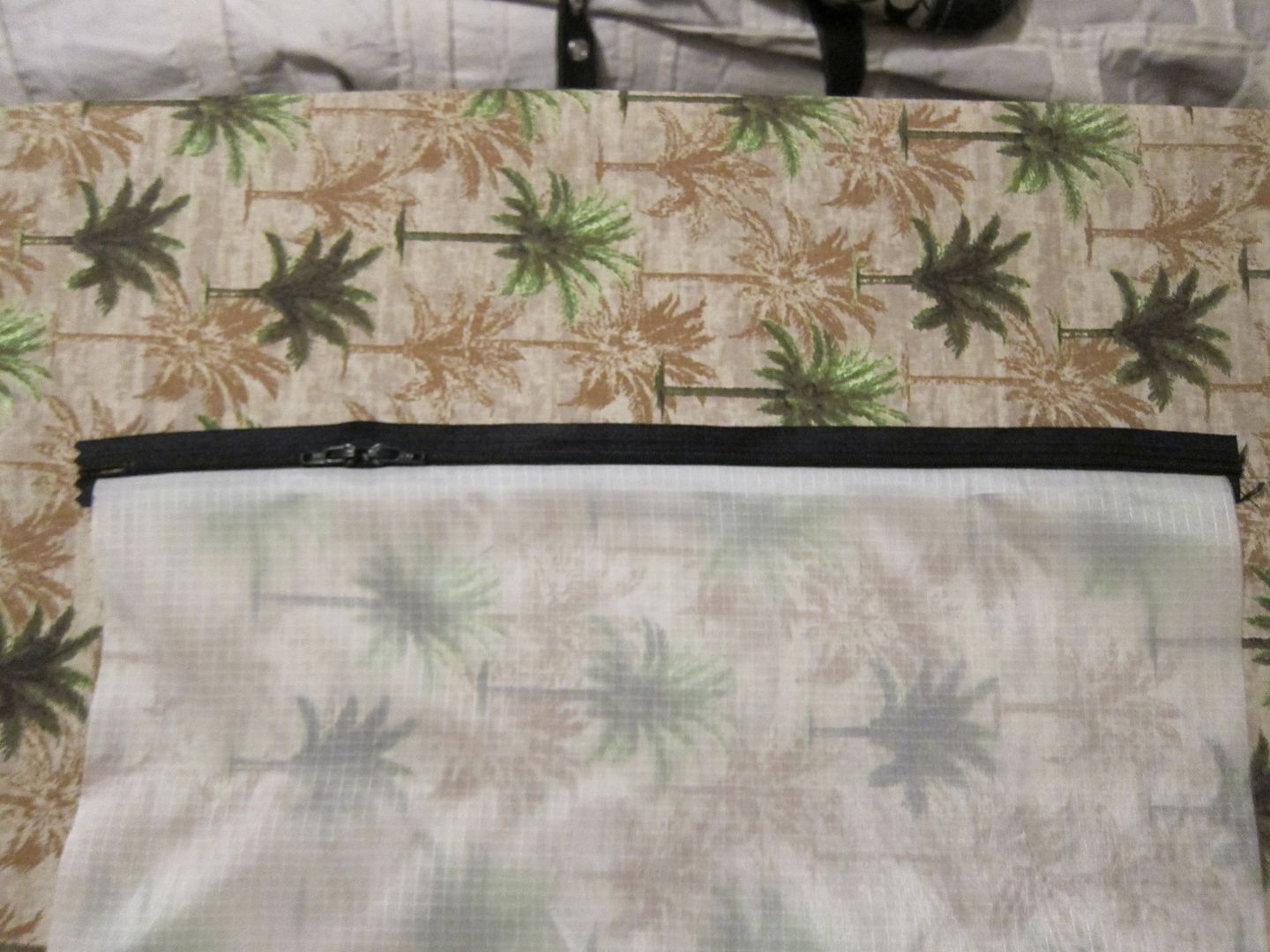Heh, that was actually pretty simple. If I can get around to it, I will do an updated thread with a couple tricks I have found.
For the flap, essentially start as you normally would. Do that first stitch along the zipper. Then, instead of just folding the material all the way over and doing the second stitch, I actually pulled it to the other side of the zipper. I used clips to hold it in a straight line along the opposite side of the zipper and then did the second stitch on the zipper. You can then unclip the flap and iron it so it has a nice crease. If you desire, you can also run a stitch along the edge to give it some rigidity. Finally, continue on as normal. I hope that makes sense.
Take this photo below, instead of folding it over as shown, just run the material to the opposite edge of the zipper tape and clip.

I was just rereading my instructions here and I think I can make the process a little easier so I will try to get an updated thread going here soon. I was planning to make another one of these big bags so that will be a good project to illustrate the process.
For the flap, essentially start as you normally would. Do that first stitch along the zipper. Then, instead of just folding the material all the way over and doing the second stitch, I actually pulled it to the other side of the zipper. I used clips to hold it in a straight line along the opposite side of the zipper and then did the second stitch on the zipper. You can then unclip the flap and iron it so it has a nice crease. If you desire, you can also run a stitch along the edge to give it some rigidity. Finally, continue on as normal. I hope that makes sense.
Take this photo below, instead of folding it over as shown, just run the material to the opposite edge of the zipper tape and clip.

I was just rereading my instructions here and I think I can make the process a little easier so I will try to get an updated thread going here soon. I was planning to make another one of these big bags so that will be a good project to illustrate the process.
